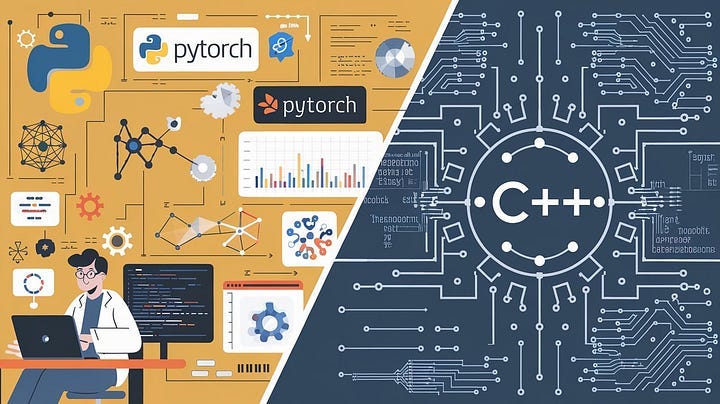Artificial intelligence (AI) development has seen Python emerge as the dominant language, often overshadowing more traditionally powerful languages like C++.
This trend isn’t merely a coincidence; it stems from several practical factors that make Python particularly suited to AI, machine learning (ML), and data science applications. Let’s explore why Python has taken the lead over C++ in the AI space.
1. Ease of Use and Readability
Python’s syntax is simple and easy to read, allowing developers to focus more on solving problems rather than on managing the language itself. Python’s code structure is clean and almost like reading plain English, making it accessible to both beginners and seasoned developers.
In contrast, C++ is known for its complex syntax and requires a deeper understanding of programming concepts like memory management, pointers, and templates. Python’s straightforward nature encourages quick prototyping, which is invaluable in AI where algorithms need frequent tweaking and testing.
Companies like Google and Facebook use Python extensively in their AI research due to its ability to enable rapid experimentation. Google’s TensorFlow library, one of the most widely used frameworks in AI, is primarily designed with Python in mind, highlighting the preference for Python’s ease of use in complex AI tasks.
2. Extensive Libraries and Frameworks
Python boasts an extensive range of libraries and frameworks specifically designed for AI and ML, such as TensorFlow, PyTorch, scikit-learn, Keras, and many others. These libraries are pre-built and optimized, allowing developers to implement complex algorithms without needing to code them from scratch.
C++ also has libraries like Dlib, Shark, and Caffe, but Python’s libraries are often more user-friendly, well-documented, and integrate seamlessly into AI workflows.
For instance, PyTorch, preferred by researchers for its dynamic computation graph, provides a flexible environment that Python manages effortlessly, making it a favorite in academic and industrial research settings.
3. Community Support and Open-Source Contributions
The Python community is one of the most active in the world, with a wealth of resources for developers at all levels. New libraries, tools, and solutions are constantly being developed, thanks to its collaborative ecosystem. When a developer encounters challenges or wants to implement something new, they are more likely to find existing solutions within the Python ecosystem.
C++ has a strong but more fragmented community, with less focus on AI-specific development. The ongoing contribution to Python’s open-source AI tools and libraries keeps the language at the forefront of innovation.
Major companies like Microsoft, Google, and Amazon actively contribute to Python-based projects, further enhancing the language’s capabilities.
4. Speed of Development vs. Execution Speed
C++ is known for its execution speed and efficiency, which is advantageous for performance-critical applications. However, in AI, the primary bottleneck often lies in development speed rather than execution.
Python allows for rapid prototyping, testing, and iteration — crucial aspects during AI research and development.
While C++ offers superior execution speed, Python’s flexibility and faster development cycle often outweigh this benefit in many AI projects. Notably, Python can seamlessly interface with C++ through libraries like Pybind11, blending Python’s ease of use with C++’s performance where needed.
This integration is commonly seen in deep learning libraries, where core computations are often optimized in C++ while the high-level interface remains in Python.
Tesla’s Autopilot system leverages Python for its neural network training. While C++ is used in production for performance, the rapid prototyping and training in Python allow for quicker iterations and adjustments — a critical factor in developing self-driving technology.
5. Integration Capabilities
Python’s ability to integrate with other languages, tools, and platforms makes it versatile. Many AI frameworks support Python as the primary language, allowing seamless integration with components written in other languages like C++, Java, or R. This multi-language interoperability is crucial when systems need to interface with various data sources and components.
Libraries such as Boost.Python and Pybind11 facilitate smooth integration between Python and C++, enabling developers to combine Python’s high-level scripting capabilities with the speed of C++.
This approach is often used in environments where performance is critical but rapid prototyping and development are equally important.
6. Visualization and Data Handling
AI development often involves extensive data manipulation and visualization. Python shines here with libraries like Matplotlib, Seaborn, and Plotly for visualization and pandas and NumPy for data handling.
These tools enable quick and effective data processing, making it easier to clean, analyze, and visualize data — a crucial aspect of AI workflows.
In AI research, visualization tools help in understanding model performance and diagnosing issues.
For instance, when tuning hyperparameters of a neural network, Python’s visualization capabilities allow researchers to see training curves, loss functions, and accuracy plots, providing immediate feedback on how adjustments impact results.
7. Industry Trends and Future Outlook
Python has become the default teaching language for AI and data science in academia due to its simplicity and the breadth of available libraries. This has led to a growing talent pool familiar with Python, reinforcing its position in the industry.
Emerging languages like Julia and Rust are gaining attention for AI, but Python’s deeply entrenched ecosystem, strong community, and industry adoption make it unlikely to be displaced soon.
The widespread use of Python in academic settings means that as students and researchers transition into the industry, they bring with them a preference for Python-based tools, further solidifying Python’s place in AI development.
Conclusion
Python’s dominance in AI comes from a mix of ease, efficiency, and a vast ecosystem of tools and libraries designed for AI. The language accelerates development, fosters collaboration, and keeps the focus on innovation rather than managing language complexities.
While C++ remains essential for performance-heavy tasks, Python’s user-friendly nature, community support, and adaptability ensure it continues to lead in AI development.
🚀 Support My Work and Get More Exclusive Content! 🚀
If you found article helpful and want to see more in-depth content, tools, and exclusive resources, consider supporting me on Patreon.
Your support helps me create and share valuable content, improve projects, and build a community of passionate developers.





